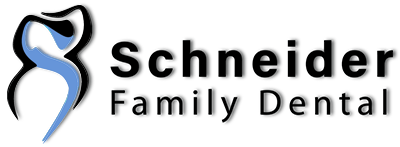Keeping Your Mouth and Your Teeth Clean
Brush your teeth with fluoride toothpaste twice a day for at least two minutes to help keep your teeth and mouth healthy.
Plaque is a film of bacteria that coats your teeth if you don’t brush them properly. It contributes to gum disease, tooth decay and cavities.
Toothbrushing stops plaque building up. It isn’t just about moving some toothpaste around your mouth, though. You need to concentrate on the nooks and crannies to make sure you remove as much plaque and leftover bits of food as possible.
Toothbrush tips
Replace your brush or brush attachment every three months.
Never share your toothbrush as this can spread infections.
Brush your teeth twice daily with fluoride toothpaste for at least two minutes.
When should I brush my teeth?
Brush your teeth for at least two minutes in the morning before breakfast and last thing at night before you go to bed.
Never brush your teeth straight after a meal as it can damage your teeth, especially if you’ve had fruit, fizzy drinks, wine or any other food that contains acid.
This is because tooth enamel is softened by the acid and can be worn away by brushing. Instead, wait an hour after a meal before brushing your teeth to give your saliva chance to neutralise the acid.
Should I use an electric or manual toothbrush?
It doesn’t matter whether you use an electric or manual toothbrush. They’re both equally good as long as you brush with them properly. However, some people find it easier to clean their teeth thoroughly with an electric toothbrush.
What should I look for in a toothbrush?
For most adults, a toothbrush with a small head and a compact, angled arrangement of long and short, round-end bristles is fine. Medium or soft bristles are best for most people. Use an electric brush with an oscillating or rotating head. If in doubt, ask your dentist.
What type of toothpaste should I use?
The cleaning agents and particles in toothpaste help to remove plaque from your teeth, keeping them clean and healthy.
Most toothpastes also contain fluoride, which helps to prevent and control cavities. It’s important to use a toothpaste with the right concentration of fluoride. Check the packaging to find out how much fluoride each brand contains.
Children aged up to three: use a smear of toothpaste containing no less than 1,000ppm (parts per million) fluoride.
Children aged three to six: use a pea-sized amount of toothpaste containing 1,350-1,500ppm fluoride.
Adults: use a toothpaste that contains at least 1,450ppm fluoride.
It’s fine for babies and children to use the family toothpaste rather than a special children’s toothpaste, provided it contains the right concentration of fluoride.
How to brush your teeth
The British Dental Health Foundation gives the following advice on how to brush your teeth:
Place the head of your toothbrush against your teeth, then tilt the bristle tips to a 45 degree angle against the gum line. Move the brush in small circular movements, several times, on all the surfaces of every tooth.
Brush the outer surfaces of each tooth, upper and lower, keeping the bristles angled against the gum line.
Use the same method on the inside surfaces of all your teeth.
Brush the chewing surfaces of the teeth.
To clean the inside surfaces of the front teeth, tilt the brush vertically and make several small circular strokes with the toe (the front part) of the brush.
Brushing your tongue will freshen your breath and clean your mouth by removing bacteria.
How to floss
Flossing isn’t just for dislodging food wedged between your teeth. Regular flossing may also reduce gum disease and bad breath by removing plaque that forms along the gum line.
Take 12-18 inches (30-45cm) of floss and grasp it so that you have a couple of inches of floss taut between your hands.
Slip the floss between the teeth and into the area between your teeth and gums, as far as it will go.
Floss with 8 to 10 strokes, up and down between each tooth, to dislodge food and plaque.
Floss at least once a day. The most important time to floss is before going to bed.
You can floss before or after brushing.
You can use interdental brushes instead of flossing, especially if your teeth are very close together and you find it difficult to manoeuvre dental floss through the gap.
Avoid using toothpicks to remove trapped food from between your teeth, as you could cause your gums to bleed, which can lead to an infection.
Should I use mouthwash?
Yes, using a mouthwash that contains fluoride can help prevent tooth decay and help get rid of any last bits of bacteria or leftover food that you might have missed with your toothbrush.
However, don’t use mouthwash straight after brushing your teeth. Choose a separate time, such as after lunch. And don’t eat or drink for 30 minutes after using a fluoride mouthwash.
Many mouthwashes contain alcohol, so they’re not suitable for children, as they could swallow them accidentally. If you use a mouthwash with alcohol, you may get a very dry mouth and dry, cracked lips due to the drying effect of the alcohol. You can avoid this by using an alcohol-free version.
Are plaque-disclosing tablets helpful?
Plaque-disclosing tablets work by dyeing plaque either blue or red and can be very useful at showing you which areas of your teeth you’re not cleaning properly.
As the staining can last for some hours, it’s best to use these tablets at bedtime or when you’re not expecting visitors.




